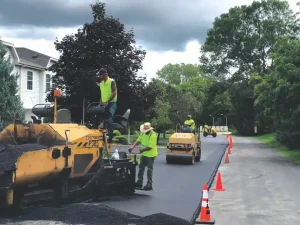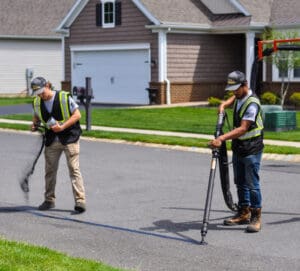Defined as interconnected cracks resembling the scales of an alligator’s skin, alligator cracks signal a deeper issue within a given pavement structure. These cracks can be more than mere aesthetic nuisances; they often indicate structural weaknesses that demand immediate attention. Diving into the intricate world of alligator crack prevention reveals that maintenance plays a pivotal role in preserving our road networks. Here’s what you need to know about preventing alligator cracking through timely maintenance.
Understanding Alligator Crack Causes
First, it’s helpful to understand exactly what causes alligator cracks to form in the first place. Alligator cracks often result from the expansion and contraction of asphalt surfaces due to temperature variations. Understanding these fluctuations is crucial for effective prevention. The presence of excessive moisture can also weaken the asphalt’s structural integrity, contributing to the formation of alligator cracks. Managing moisture levels is essential in preventing this type of distress.
High levels of stress from heavy loads, especially in areas with frequent traffic, can accelerate the development of alligator cracks. Analyzing and managing load-bearing stress is imperative for long-term pavement health. Finally, the composition of asphalt materials plays a significant role in the susceptibility to alligator cracking. Examining and optimizing material formulations is essential in addressing the root causes.
The Importance of Regular Inspections
Trained inspectors can identify early signs of alligator cracking through visual assessments, allowing for prompt intervention before the issue escalates. Utilizing advanced technologies, such as pavement condition sensors and imaging systems, enhances the precision of crack detection, enabling a proactive approach to maintenance.
Beyond cracks, identifying surface defects like raveling or uneven texture provides valuable insights into the potential development of alligator cracks. Inspecting the underlying layers for issues such as inadequate compaction or poor base support helps address the root causes of alligator cracking.
Proactive Maintenance Strategies
Surface Sealants and Coatings
Choosing appropriate sealants based on the severity of the cracks and environmental conditions is crucial. Sealants act as a protective layer, preventing water penetration and inhibiting crack progression. In addition, proper application techniques, including thorough cleaning and priming, ensure the sealants adhere effectively, providing a durable barrier against the formation and expansion of alligator cracks.
Structural Reinforcements
Incorporating fiber-reinforced polymers into asphalt mixtures enhances tensile strength, mitigating the impact of load-bearing stress and preventing the development of alligator cracks.
Innovations in asphalt mixtures, such as polymer-modified compositions, offer improved resistance to environmental factors, contributing to the long-term prevention of alligator cracking.
Final Thoughts
Recognizing the multifaceted causes of alligator cracking and implementing proactive maintenance strategies are fundamental steps toward preserving the integrity of asphalt surfaces. Through regular inspections and strategic maintenance, we can ensure safer and more resilient roadways for the long term.
Get the Best in Alligator Crack Prevention Services from Pro-Pave!
At Pro-Pave Incorporated, we have a team of experts adequately equipped to handle your paving project. No matter what your vision may be, or what kind of materials you want to use, we have the skills and expertise needed to do the job right.
For more information about our approach to treating and preventing alligator cracks, call us directly at 703-433-9500 or fill out our contact form today!



